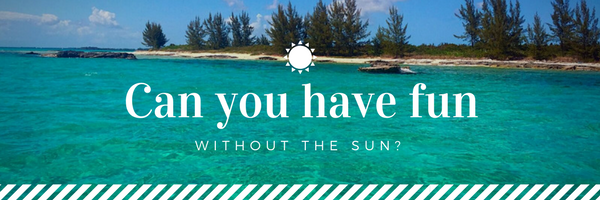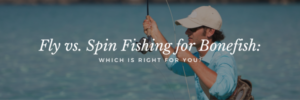Your ideal bonefishing trip is probably one with moderate weather, mild winds, and plenty of sunshine.
In reality, however, some of your time on the flats is likely to be spent in all kinds of conditions. The good news is that the weather doesn’t have to have a negative impact on your haul. Your willingness to remain flexible and your ability to adapt to changes in the elements will allow you to bring big bones in, regardless of the weather conditions.
Casting Without The Glare
One of the best parts about fishing for bones on cloudy, overcast days is the fact that you won’t have to deal with the glare. In fact, the majority of the fish that you spot on an overcast day are likely to be right near the boat, and fairly easy to see. For fishers, this is an all-around advantage, even for those who’ve become pretty adept in using their polarized sunglasses to peer right through the near-blinding glare of a sunlit surface.
Work On Your Short Game
Given that your targets will be significantly closer to you, the real challenge in fishing for bones on an overcast day will be perfecting your short cast. You’ll need to deliver a quick and incredibly accurate cast at a moment’s notice. This makes it important to maintain a good ready position and to have a well-practiced casting stroke. You’ll need to keep between seven and nine feet of line outside of the rod tip for rapid rod loading and to avoid false casts. With your short cast, make sure that your rod tip only travels a few feet. Your retrieve will need to be adapted to the cloudy conditions as well. Instead of stripping away, which may cause you to run out of line even before your target takes a bite, strip the line in short twitches to lure the bonefish in.
Use Feed Marks To Compensate For Changes In Visibility
Although getting rid of the glare can be beneficial, this does not mean that you’ll have a clear view of your targets at all times. In fact, spotting bonefish on an overcast day can often be more difficult than spotting these fish at sunset, when the glare is at its brightest. Feed marks are your best clue as to whether or not any big bones are feeding in the area. These are dark, grayish spots along the flat bottom. They indicate that bones have recently been burrowing into the sand in pursuit of blue crabs. If you spot an area with lots of feed marks, you’re probably in the right spot. The darkest feed marks are generally the freshest and mean that bonefish should still be close by.
Stay Alert
One thing that many seasoned bonefishers love about fishing for bones on a cloudy, windy, and otherwise undesirable day is the fact that it introduces a whole new level of challenge. This isn’t going to be a relaxing, kick-back kind of day where you’re looking and acting at a leisurely pace. If you want your haul on a sunless day to be just as impressive as your haul on a sunny one, you’ll need to be extra quiet, and maintain fast reflexes and incredibly sharp eyes.









